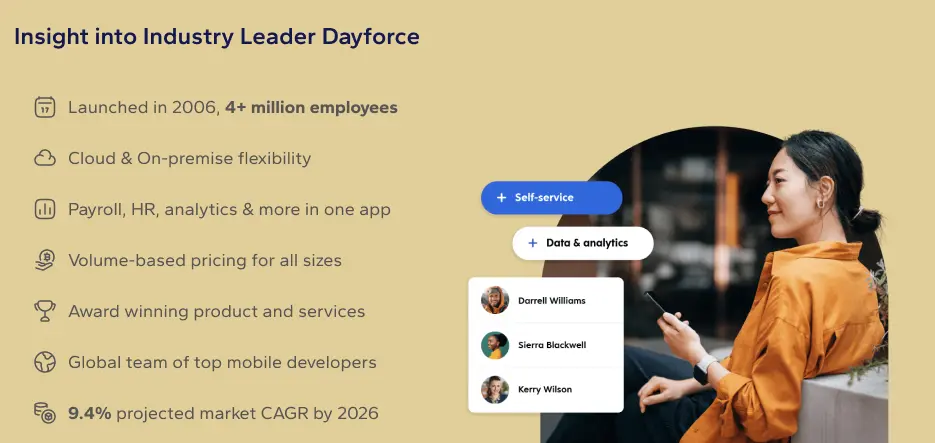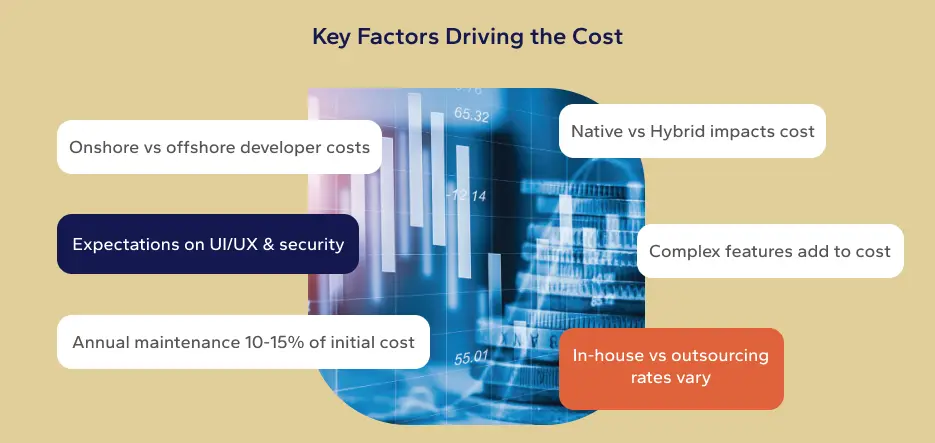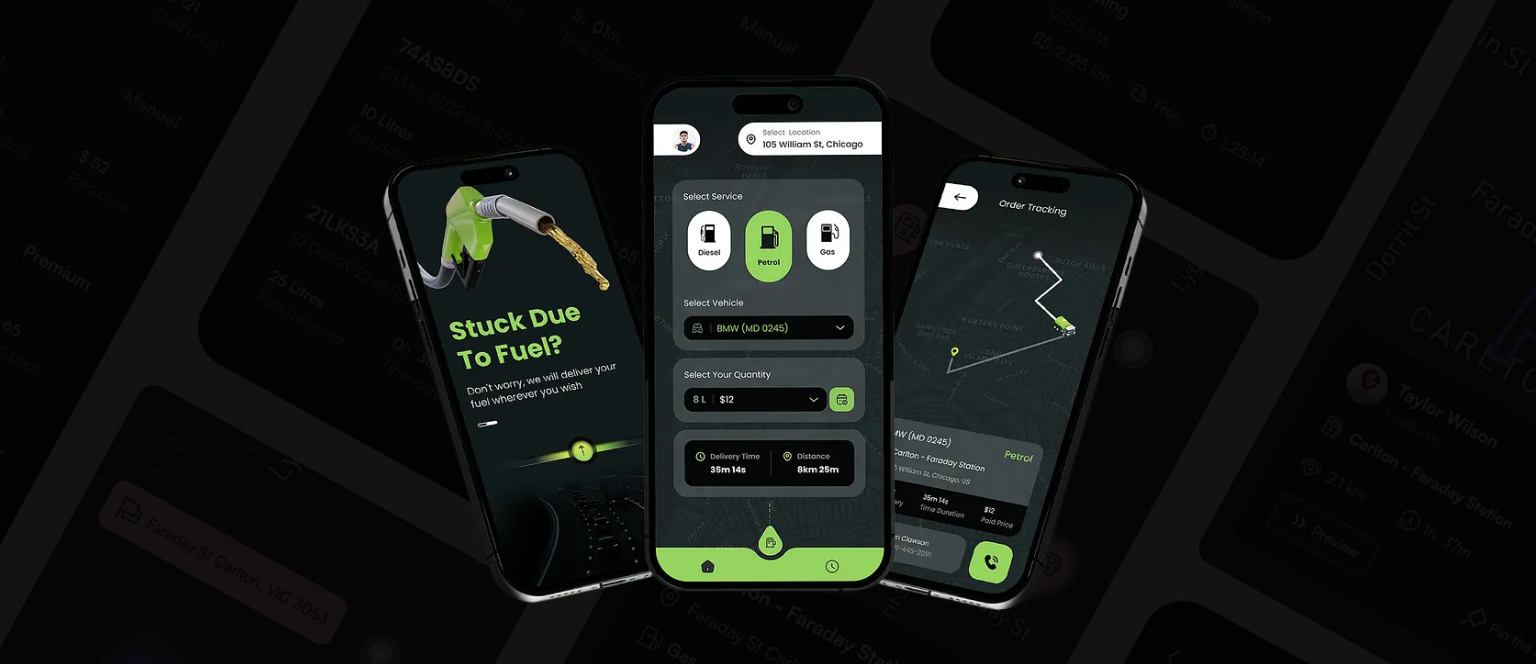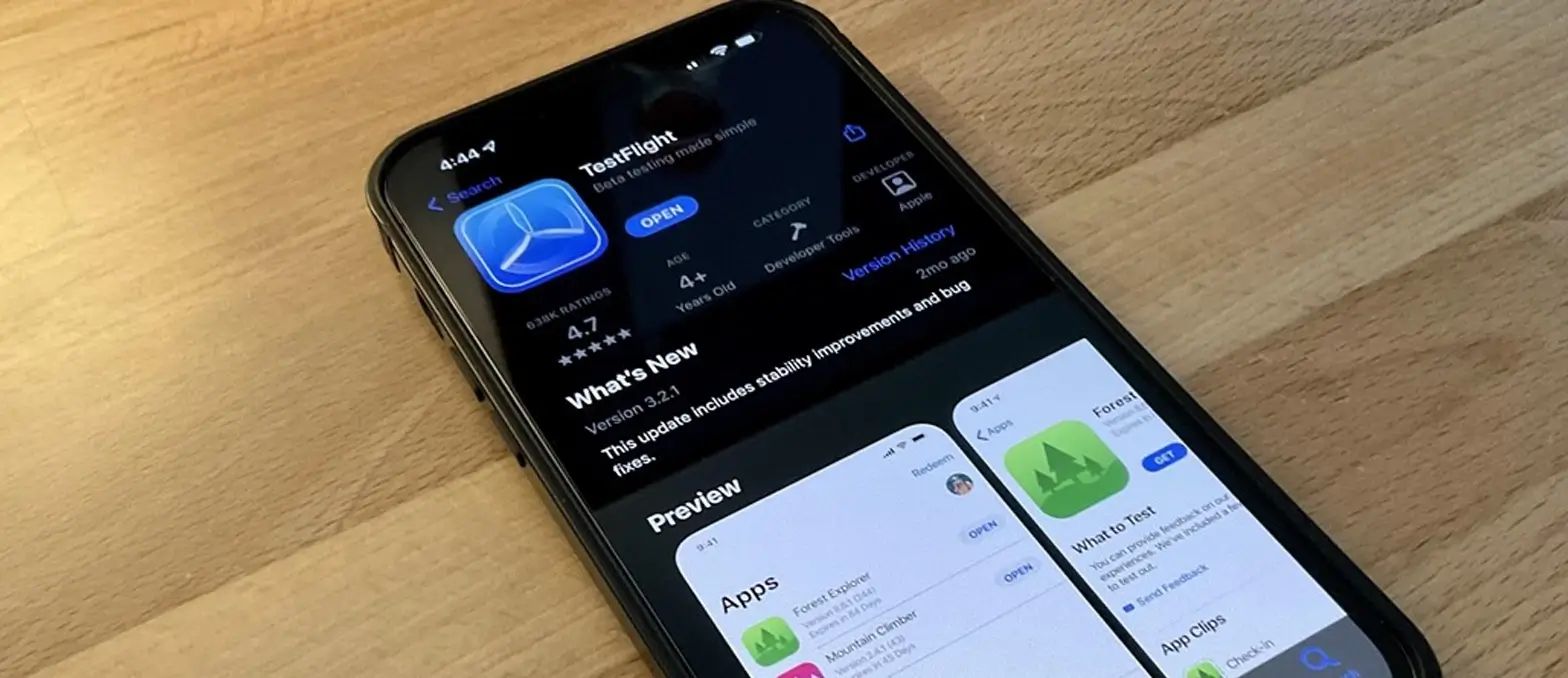Table of Contents
Human Capital management software aims to maximize the way organizations use the skills, knowledge, talents and capabilities of employees. Efficient HCM app like Dayforce can aid businesses find, retain and develop the best talent, increase productivity and efficiency of their employees and also plan their workforce needs in a strategic manner. As the nature of work shifts and the competition for talent grows the demand for effective HCM technology is growing rapidly.
However, as per top custom mobile app development company, constructing a reliable HCM app like Dayforce that is able to meet the changing needs of organizations and their diverse needs can be a challenging process. It’s not just about skilled programming abilities as well as a thorough knowledge of human resources management as well as the many elements of HCM such as hiring and compensation, performance management, learning and development, as well as succession planning.
We will go over all you must know about creating an efficient app for managing human capital. We will go over the process of HCM software development, the technologies used, issues faced and best practices to adhere to and tools that assist developers. It is also our goal to assist you in developing the Dayforce HCM app that increases the value you get from your company’s human capital.
What Is The Significance To Human Capital Management?
Capital refers to the talents and knowledge employees have. Human capital is a company’s most valuable asset as well as the main reason for its performance. Human capital management is crucial. Effective HCM apps can help companies find the best talent, train and keep them as employees. It helps align employees’ objectives with the company’s goals and objectives.
Get Started Now and Revolutionize your HR Management.
HCM is the process of planning the human resource needs training and development programs Performance management, benefits and compensation as well as culture development and succession planning. Around 35% of companies employ AI in HR processes by 2022. This ensures that a business has the right personnel who have the necessary capabilities to accomplish its goals. They are effectively managed and are motivated.
Benefits Of Human Capital Management (HCM) App
Ceridian Dayforce HCM app is focused on optimizing the company’s most valuable asset, its employees. A well-planned execution of HCM strategies can bring many advantages:
- In 2020, the HCM Market was worth $22.17 billion. The market is expected to grow to $32.00 billion by 2025.
- Keep top talent in the company. Employees feel valued and are motivated to remain.
- Increase employee competencies through education and training. This improves engagement, morale and performance.
- Systems for performance management that incorporate feedback and goals also aid in ensuring that work is aligned with the goals.
- Automate the mundane HR tasks using technology, allowing HR time to focus on strategic initiatives.
- Benefits, compensation and rewards that show that employees are appreciated encourage greater performance.
- Increased productivity, innovation and cost savings when employees reach their full potential and are inspired.
- Reduced turnover in employees, which improves the profitability of businesses and long-term growth.
These benefits of apps like Dayforce are all combined to enable organizations to make the most from their people while outperforming their competitors.
App Like Dayforce: An Overview
Dayforce is a leading human capital management mobile app developed by Ceridian. It is used by many large enterprises worldwide to manage their HR processes from a single platform. Some key things to know about Dayforce are:

- Dayforce was launched in the year 2006 and since then it has grown to support over 4 million employees globally. This shows its strong market presence and ability to scale.
- It is offered both as a cloud-based software as a service (SaaS) model as well as an on-premise installation based on the needs of the client. This provides flexibility in its delivery.
- Apart from the web and mobile apps, it also supports integrations with various third party platforms using APIs. This extensibility enhances its functionality.
- Features include payroll, time and attendance, benefits administration, talent management, compliance, analytics and more. It offers a comprehensive HCM solution.
- Pricing is based on the number of users/employees that need to be managed on the platform. Volume-based plans make it affordable for organizations of all sizes.
- Dayforce has won several awards and recognitions for its product and services. This shows its capabilities are well appreciated in the industry.
- Ceridian has many top hybrid mobile app development companies in the USA, Canada and other countries in its development team. This global strength helps maintain Dayforce at the cutting edge.
- The world HCM market is forecast to expand at a Compound Annual Growth Rate (CAGR) of 9.4 percent from 2020 until 2026.
If your organization wants to develop an HCM mobile app that can compete with Dayforce and other leaders, here are some aspects you need to consider.
How HCM App Like Dayforce Can Bring Value
A well-designed Dayforce human capital management app can deliver tremendous value to both enterprises and their employees. When developed using professional mobile app development services from reputed mobile app development companies USA, it has the ability to unlock several benefits. Here is a deeper look at some of the key ways an HCM mobile application can enhance overall organizational value:
1. Improved HR Service Delivery
Employees having access to HR services anywhere, anytime through a high quality mobile app drastically improves the delivery of these services. When employees can view payslips, apply for leaves, update personal details, check benefits balances and more directly from their smartphones or tablets using a custom mobile app developed by a top enterprise mobile app development company, it drastically enhances convenience and ease of access.
Gone are the days where employees had to visit the HR department during specific hours or wait for responses through email. With an effective hybrid mobile app built using frameworks like React Native or Flutter by skilled ios app development companies or android app development companies, employees have all HR data and services in their palms ready for use 24/7 regardless of location. Even simple tasks like submitting expense claims which earlier required physical visits can now be done remotely, saving valuable time for both employees and HR.
2. Streamlined Processes
Digital transformation of various HR manual processes through a dedicated HCM mobile app goes a long way in streamlining workflows. Tasks which were earlier paper-based and error-prone like timesheet management, attendance tracking, payroll approvals etc. can be automated on the mobile app.
For example, geofencing and biometrics based digital attendance capturing developed by reputed mobile app developers eliminates the hassle of maintaining physical sign-in sheets. Similarly, electronic timesheet management with automatic calculations and online supervisor approvals saves significant time over physical sheets and waiting for checks. Even payroll related activities from recording incentives to submitting payroll data and getting disbursal status updates can now be done seamlessly within the app itself.
When core transactional processes are digitized through an HCM mobile app built as per industry standards by a professional mobile application development agency, it sharply reduces manual efforts, paper usage as well as chances of errors. This ultimately leads to quicker turnaround times, better compliance and higher stakeholder satisfaction.
3. Increased Productivity
With mobile apps developing HR data and services, employees no longer need to spend time visiting different departments, making calls or waiting in queues for basic information. They can freely access their personal records, payroll statements, attendance records or get guidance on any query related to HR policies, claims settlement or benefits eligibility right away on their phones.
This accessibility translates to significant savings in time that was otherwise spent on admin tasks or coordinations. For managers, the ability to remotely approve timesheets and leaves, participate in online appraisals as well as access analytics reports helps reduce dependence on physical desks. Both employee and manager productivity rises as non-core administrative work diminishes, freeing up bandwidth for more strategic decision making and value adding responsibilities.
Moreover, features like timely policy updates, compliance alerts and learning resources developed inside an advanced HCM mobile app by capable custom mobile app development companies keep all users informed on the move. This fosters a culture of continuous education and upskilling, further boosting productivity in the long run.
4. Data Security and Privacy
With increasing risks of data breaches and privacy violations, it is crucial for any organizational mobile solution handling sensitive HR records to implement robust security. Expert iOS app developers or Android app developers integrated various vault-like security measures into the app architecture while custom mobile app development companies followed strict mobile app development services in USA standards.
Features like biometric and OTP based authentication for logins, field-level encryption of data during transmission, application-level permissions, timeout locks and digital certificates ensure unauthorized access is thwarted. Even the database and backend APIs are safely guarded with firewalls, automatic scrubbing of logs and regular vulnerability testing by experienced security testing companies.
Comprehensive security audits and fixes for vulnerabilities observed are also carried out post-launch. This helps establish high trust in the system and gives users peace of mind while using the mobile app for all their HR needs. Organizations are also compliant with HCM for data security, data privacy regulations of native platforms as well as country-specific laws.

5. Real-time Insights
An advantage of powering HR activities through a centralized digital channel is the ability to gather massive usage analytics on employee behavior and needs. When employees actively use the app to manage their profiles, check benefits, learn new skills or raise queries, it generates a treasure of behavioral data.
This pooled data when analyzed by business intelligence tools integrated by mobile application consulting services reveals vital insights. Some examples include which features see highest engagement or dropout rates, which policies need enhancements as per location-wise feedback, which skills require urgent training pushes and more. Such actionable employee insights empower HR and management to make informed, data-driven people decisions.
Teams are able to preempt attrition risks, optimize benefits structure, roll out new upskilling programs or revamp obsolete policies much faster. They understand what truly motivates and engages different employee segments better. Overall organizational performance rises as people strategies are aligned to uncovered needs of the workforce based on mobile app analytics.
6. Higher Employee Satisfaction
Nothing increases employee experience, engagement and satisfaction like the convenience of managing all HR needs at one’s own pace and place using a smooth, feature-rich mobile app. Employees feel in control and valued when their basic services related queries are addressed instantly without physical hassles. Transparency into their own records and a sense of participating in the larger organizational processes fosters greater ownership.
Personalization aspects like remembering saved beneficiary details or preferred languages across the employee lifecycle also augment the feeling of being understood uniquely. This positively impacts culture, collaboration as well as individual employee performance and retention. Such high satisfaction translates to an important competitive advantage for organizations as they can attract and retain the best talents.
7. Cost Savings
The cost of running manual, paperwork-intensive HR operations across areas like payroll processing, leave approvals, paper record maintenance is exceptionally high for any enterprise. It involves huge administrative overheads towards physical infrastructure, stationeries, mailers as well as larger workforce strength just for processing tasks.
By automating the whole gamut of HR activities end-to-end on an HCM mobile app created using technologies like blockchain, AI and serverless computing by top-rated mobile app development agencies, most of this spends can be effectively curtailed. Once online digital workflows are established, the apps almost run on auto-pilot at lower operational expenses. This ultimately results in phenomenal savings that generate good returns on overall investment.
To summarize, a feature-rich, user-friendly and secure HCM mobile app developed with highest quality standards by reputed mobile app developers unleashes tremendous and wide-ranging organizational value beyond just improving basic HR services. It acts as a strategic digital lever enhancing productivity, satisfaction, insights and more to optimize people performance on an upwards trajectory
Features You Must Have In Your App like Dayforce
Based on Dayforce’s capabilities and industry benchmarks, here are some key features your custom HCM mobile app must include:
Payroll Management: Features like viewing/updating employee profile, leave records, payslips, managing payroll run, viewing payslip statements etc. Offer local payroll configurations as required.
Time & Attendance: Employees can mark attendance, apply for leaves, and managers can approve them digitally. Support geofencing, facial recognition, fingerprint etc. for accurate tracking.
Benefits Administration: Manage medical insurance enrollment, update beneficiary details, view used benefits and available allowances. Provide digital claim submission and settlement.
Recruiting: Post vacancies, allow applicants to apply online, schedule video interviews, and automate offer generation/onboarding. Seamless ATS/Applicant Tracking integration.
Performance Management: Define goals, competencies, conduct performance reviews and appraisals online. Automate rating workflows, calibration, and pay hikes based on appraisal outcomes.
Learning & Development: Recommend online/offline training courses, publish learning resources like articles, videos. Track training completion and issue certificates on the app.
Analytics & Reporting: Provide people analytics on metrics like retention, attrition, productivity, absenteeism etc. Pre-built and customizable reports dashboard.
Compliance Management: Keep users aware of changing organizational policies, geo-specific compliances through push notifications. Automate compliance processes.
Question/Ticketing Support: Allow employees to raise queries and the HR team to answer/resolve them within the app. Track issue status.
Integrations: Open API to seamlessly integrate with major ERP, ATS, LMS vendors. Sync user data periodically.
These 10 features when designed well both from user experience and technical architecture perspectives can deliver an engaging HCM experience on par with industry leaders.
Steps To Build App like Dayforce
Building a fully-functional industry-grade HCM mobile application on par with capabilities of Dayforce requires meticulous planning and execution of various development stages. A well-coordinated approach by experienced custom mobile app development companies is key to delivering a robust solution meeting all stakeholder needs. Here is a deeper perspective on typical steps involved:
1. Requirement Gathering
The very first step is to arrange comprehensive consultation sessions with senior management, HR leaders as well as employees to understand organizational goals, pain-points, must-have and nice-to-have features for the app. Professional mobile application consulting services help facilitate these discussions and assimilate all requirements.
User research methods like surveys and interviews are also employed to uncover detailed workflows, niche policies, localization aspects plus usability and UX preferences. Requirements are then documented systematically covering functional specifications, data models, UI designs, performance criteria, security protocols etc. Edge cases and integrations scope with core HRIS, Payroll or other systems are finalized.
This upfront planning stage executed diligently by skilled requirements analysts forms the blueprint for the whole development process. Any gaps or ambiguities are ironed out to set the project on right foundations before proceeding to next phases.
2. Design System
With clear requirements and user personas in place, the design stage commences. Popular wireframing and prototyping tools like Figma, Sketch or Adobe XD are used by expert ui/ux designers to develop high fidelity mockups visualizing all app screens, transitions and interactions.
Key aspects like responsive design for multiple devices, intuitive navigation patterns, call-to-action spots and loading animations are thought through. Usability is optimized based on best practices and organic flow maps are prepared. User testing of the prototype improves designs further.
This design system acts as a guiding manual for developers. It ensures all visual elements, copy, information architecture and functional flows are consistently brought to life as intended during actual coding phases. Top mobile app development companies in USA and other regions are well-versed in this process.
3. Technology Selection
After understanding requirements and validating designs, focus shifts to selecting the most suitable core technology stack. Custom mobile app development firm experts evaluate criteria like platform availability, performance needs, security compliance, integration preferences and long term scalability to shortlist the most viable platform – whether it be native Android and iOS or hybrid using React Native, Flutter etc.
POC prototypes are also built to test-run key features and gather real feedback on technology suitability. Based on POC outputs and organizational constraints, the final call is made on the platform. Similarly, decisions are taken on backend systems (RESTful or GraphQL), database (SQL, NoSQL), hosting (on-premise or cloud), SDKs and development tools after careful assessment.
This technology foundation selected properly forms the epicenter of whole architecture. The right selection done through a diligent evaluation process makes app development smooth down the line.
4. Database Design
Database design follows technology selection to logically model all entity relationships and attributes for efficient data storage, retrieval and handling of complex transactions. Experienced database architects design normalized schemas by understanding entity behaviors, querying patterns and integration needs.
Aspects like referential integrity, indexing, stored procedures, partition tuning etc. are looked at. Scalability is enabled through schema optimizations like denormalization. Automated scripts are created for initial data seeding and deployment. Security features ensuring data is safely accessible only by authorized access points are woven in.
Various popular SQL databases like MySQL, Oracle or PostgreSQL as well as NoSQL options like MongoDB, Cassandra are suitable for such HR apps depending on specific requirements. API-driven migration strategies are also planned for flexibility. This robust database design enables seamless CRUD under the hood.
5. Frontend Development
With solid designs and database ready, frontend development kicks in. Best HR companies in USA and android app development companies develop interactive app screens and modularized codebase as per best practices.
Modern frameworks and widgets like React, Flutter or SwiftUI help build responsive and reusable UI components for varied platforms and form factors. State management ensures smooth data fetching and rerendering. Accessibility, localization and animations elevate UX.
Special focus is given to usability challenges on different platforms with testing across devices for defects. Debugging and optimizations are done iteratively alongwith backend integrations. This makes the frontend highly stable, performant and capable of handling changing business logic dynamically post-launch.
Unlock the Secrets to Building a Cutting-edge HCM App like Dayforce in 2025
6. Backend Development
In parallel, dedicated API developers construct the scalable backend architecture and secure API endpoints powering app functionalities. Microservices approach is adopted to isolate modules.
RESTful services are developed using techniques like versioning, batching, caching efficiently serving apps and third party needs. Authentication using standards like OAuth along with authorization policies ensure data security. Search, filters, analytics modules enable smarter experiences. Real-time notifications enable immediate updates.
Error handling, validation, exceptions and edge cases are addressed meticulously. Database operations, file uploads, caching etc. are offloaded for performance. Testing verifies expected behaviors. Mobile frameworks like Nodejs, Django, .Net help create feature-rich backends completed in multiple sprints.
7. Integration Development
The integration phase brings together all underlying modules interacting between mobile interfaces and backend systems. Professional mobile application consulting services help identify major touch-points for apps like single-sign on, attendance data exchange, payroll runs, benefits enrollment etc.
APIs are developed adhering to standards facilitating integrations with ERPs, core HRIS, ATS from established vendors as well as custom tools using SDKs and libraries. Data mappings and transactions are tested end-to-end between systems. Real-time and periodic sync mechanisms keep data in sync.
This forms the backbone enabling seamless flow of information across organizational digital infrastructure. Varied authentication and authorization models are also supported for complex SSO needs.
8. Security Implementation
As employee and company-critical data will reside on the app, security assumes utmost importance. Experienced developers take proactive steps securing the solution right from the architecture design phase as advised by reputed mobile app development companies USA.
Features like biometric and multifactor login, encryption of sensitive fields, programmatic controls, network security etc. are thoughtfully implemented. Comprehensive testing, certification and vulnerability scanning are conducted with focus on OWASP top risks.
Change management policies plus regular security audits help identify threats. Quick fixes and upgrades ensure compliance with industry regulations like GDPR wherever applicable. Data centers, computing resources and delivery also meet high security benchmarks. This instills confidence while using the app.
9. Testing & Validation
Mobile app testing services groups comprising quality analysts thoroughly check app functioning at every level – be it unit, integration, API, security, performance, localization or regression testing. Both manual and automation tests covering positive as well as negative scenarios are designed.
Beta testing involving real users uncovers real-life pains missed otherwise. Feedback helps apps mature. Frequent sprints incorporating fixes until all requirements are fully met. Load & stress testing verifies app stability under heavy usage. Accessibility & internationalization validates global outreach.
Domain expertise and critical feedback from various groups over iterations makes solution production-ready for formal launch. Only then is user sign-off and deployment approval taken to move ahead.
10. Deployment
During deployment, frontend code along with optimized assets and configuration files are built and published on respective online marketplaces like Google Play or Apple App Store by following standardized release processes.
Simultaneously, backend changes and database migrations are rolled out on production infrastructure consisting of scalable cloud servers and services. Configuration management including tools like Ansible automate deployments. Real-time monitoring mechanisms are established for issue detection.
Automated integration pipelines help incorporate continuous feedback loops. CDN, edge optimization, containerization etc. enable seamless deliveries. Well-handled rollouts ensure glitch-free experience for the target audience from day one.
11. Marketing & Adoption
An analytics-driven marketing strategy is crafted by digital experts to maximally promote the app and fuel adoption. Targeted awareness campaigns, engagement banners, referral programs increase visibility. Syncing with organizational promotion events amplifies outreach.
Powerful in-app engagement tools sustain user activations. Training modules and help videos facilitate smooth learning. Continuous feature releases maintain excitement. Automated remarketing campaigns addressing specific user behaviors expand base.
Deep analytics on installation funnels, demographics and in-app behavioral patterns provide granular consumer insights aiding future enhancements as well. This iterative promotion maximizes app potential as a robust HR solution for all.
With the above iterative yet systematic methodology diligently executed by dedicated custom mobile app development services, an industry-grade all-in-one HCM app experience truly mimicking capabilities of Dayforce can be delivered.
Costing of Developing HCM App Like Dayforce
The overall cost of developing an Employee Benefits Software like Dayforce largely depends on various factors like:

- Mobile Platform: Native (higher cost) vs Hybrid (lower cost) development
- Number of features and complexity: More features mean higher cost
- Development approach: Outsourced vs in-house development
- Location of developers: Onshore vs offshore rates vary
- Quality expectations from app: UI/UX, security, stability impact cost
- Ongoing maintenance and support costs post-launch
Keeping the above factors in mind, here is an estimated breakup of costs:
Planning and Design – $10,000 to $15,000
- Requirement analysis, wireframing, prototypes
Development – $80,000 to $150,000
- Frontend, backend, integrations etc.
Testing – $15,000 to $30,000
- Unit, integration and validation testing
Deployment – $5,000 to $10,000
- Publishing on app stores, server setup
Maintenance per Year – $15,000 to $30,000
- Bug fixes, enhancements, support
So the total initial development cost range could roughly be $125,000 – $235,000 depending on specific requirements and delivery model chosen. Post-launch annual maintenance costs are around 10-15% of the initial investment.
It is advisable to involve top mobile application consulting services to properly analyze requirements, estimate costs, provide timelines and select the right mobile app development partners like leading mobile app development company or ios app development agency for the project. They can ensure development is completed within budget and deliverables.
Some other important aspects to keep in mind are opportunities to reuse existing components, ongoing feature roadmap, talent availability etc. Proper planning and partner selection can help build powerful HCM solutions like Dayforce in a cost-effective way.
Final Thoughts
Building an app on par with Dayforce requires advanced HR domain expertise, diverse skills and solid methodologies adopted by experienced mobile app development agencies. With meticulous planning and execution, organizations can deliver powerful yet affordable human resource management apps to the workforce of tomorrow.
So, developing a fully-functional HCM mobile application on par with industry leaders like Dayforce’s human capital management app needs meticulous planning, choice of right technologies and deployment of proven development methodologies by experienced HR App Development companies throughout the project lifecycle. This systematic approach can deliver cost-effective yet immensely powerful human resources apps meeting evolving enterprise and workforce needs.
FAQs
Q1. What budget is typically required for developing an HCM app?
A typical budget range is $125,000 to $250,000 depending on features, capabilities required and delivery model chosen. Annual maintenance costs are usually 10-15% of initial investment.
Q2. How long does it take to develop such an app?
A standalone human resources app development usually takes about 6-12 months provided requirements are clear and modular development approach with frequent testing is followed. Complex customization may increase timelines.
Q3. What are some key factors determining app development cost?
Factors like chosen platform, features, third party integration, security protocols, vendor location and experience heavily influence HR App Development cost. Customized solutions tend to be more expensive than generic ones.
Q4. How do organizations choose the right HR partner for app development?
Thorough due diligence of portfolios, certifications, client testimonials, technologies expertise, security processes, support capabilities and cultural fit helps identify the right mobile application consulting services or HCM Solutions provider best matching unique needs.
Q5. What are some best practices to ensure app success?
Focusing on aspects like user centered design thinking, modular architecture, test driven development, regulatory compliances, data security, analytical capabilities, contextual help and training ensures the HR Apps can adapt and deliver value for long term.





